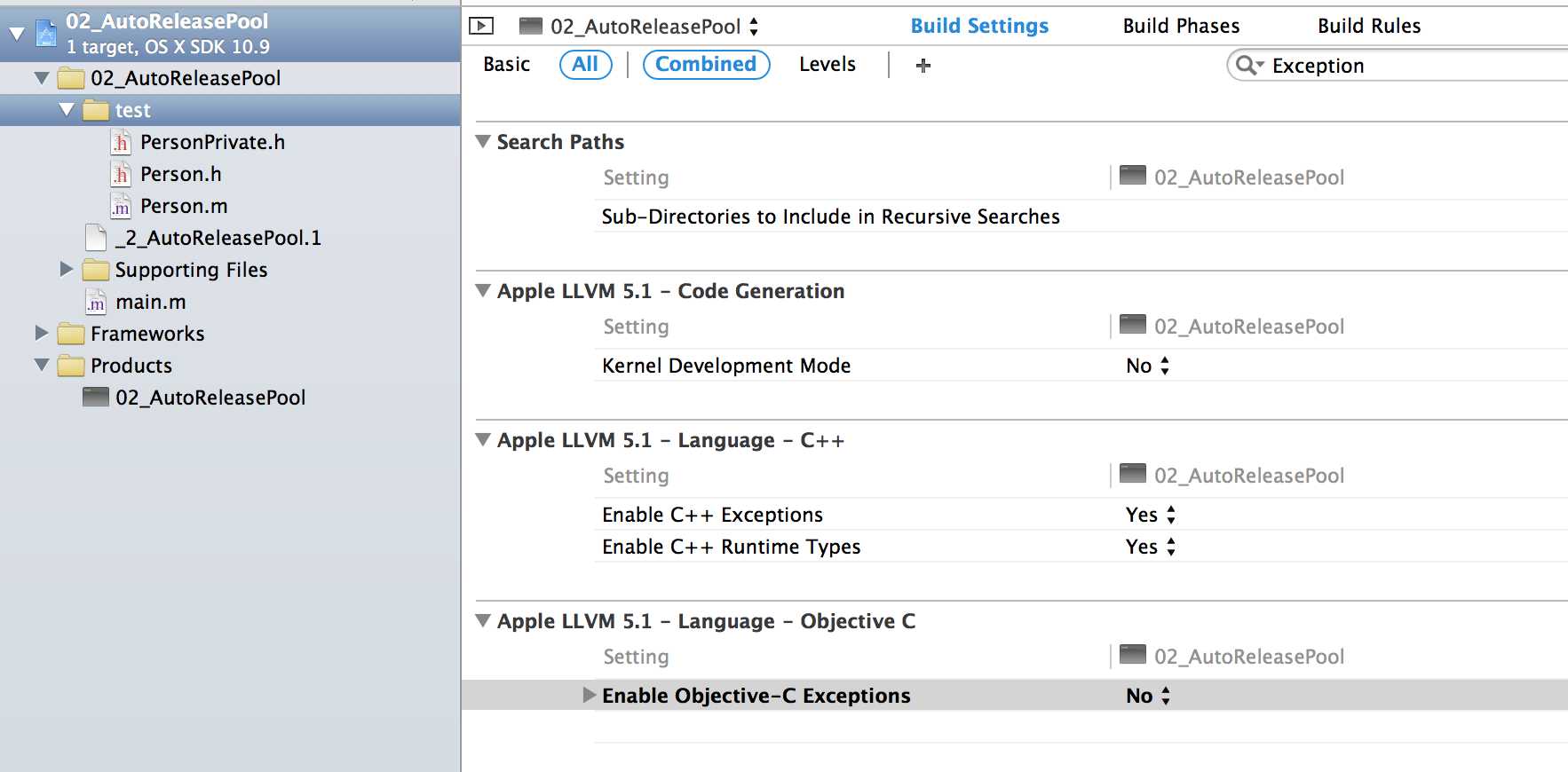标签:
// @try 块捕捉异常@try {// 这里发生了一个异常@throw [NSException exceptionWithName:@"demo" reason:@"the exception demo" userInfo:nil] ;}@catch (NSException *exception) {// 输出异常详细原因NSLog([exception reason]);// 输出异常名称NSLog([exception name]) ;// @throw ; // 再次将异常抛出,@catch 块中@throw 未指定欲抛出的异常指针则默认抛出@catch 的参数.}@catch(id exception){// 处理其他异常}@finally {}
@catch 块中抛出异常,若@throw 未指定欲抛出的异常指针则默认抛出@catch 的参数. 上处代码的catch块则会抛出 exception
//不捕获异常的内存管理Person *p = [[Person alloc] init];[p description] ;[p release] ;// 捕获异常的内存管理Person *p2 = [[Person alloc] init ] ;@try {[p2 description] ;}@catch (NSException *exception) {NSLog(@"exception : %@" ,[exception reason]) ;}@finally {[p2 release];}
异常处理有时候会遇到异常对象被自动释放的小问题,因为你不知道什么时候释放异常对象,所以它总是作为自动释放对象而创建。当自动释放池销毁的时候,自动释放池中托管的所有对象也会被销毁,其中包括异常对象。
观察如下代码。
-(void) test{NSAutoreleasePool *pool = [[NSAutoreleasePool alloc] init ];@try {// 此处会发生异常NSDictionary *myDictionary = [[NSDictionary alloc] initWithObjectsAndKeys:@"asdasd", nil];}@catch (NSException *exception) {// @throw 会在finally 之后执行,这个时候 exception 已经被release。@throw ;}@finally {[pool release] ;}}
上述代码看似正确,但别高兴的太早,@catch代码块中再次抛出异常,而@fianlly 则会在@throw 之前执行,这样会导致pool被释放,而在pool中托管着异常对象,则异常对象exception也会被释放。在外部使用这个exception的时候就会发生异常。
解决办法: 在pool外部保留
-(void) test{// 用于保存exceptionid saveException = nil ;NSAutoreleasePool *pool = [[NSAutoreleasePool alloc] init ];@try {// 此处会发生异常NSDictionary *myDictionary = [[NSDictionary alloc] initWithObjectsAndKeys:@"asdasd", nil];}@catch (NSException *exception) {// retain 一下再throw 确保对象不会被释放saveException = [exception retain];@throw ;}@finally {[pool release] ;// 保留下来的exception 也需要释放,当外部pool release的时候才会被释放[saveException autorelease ];}}
选择项目的属性文件 --》 搜索Exception --> Enable Objective-C Exceptions --> 选择NO
标签:
原文地址:http://www.cnblogs.com/mrwu/p/4331142.html